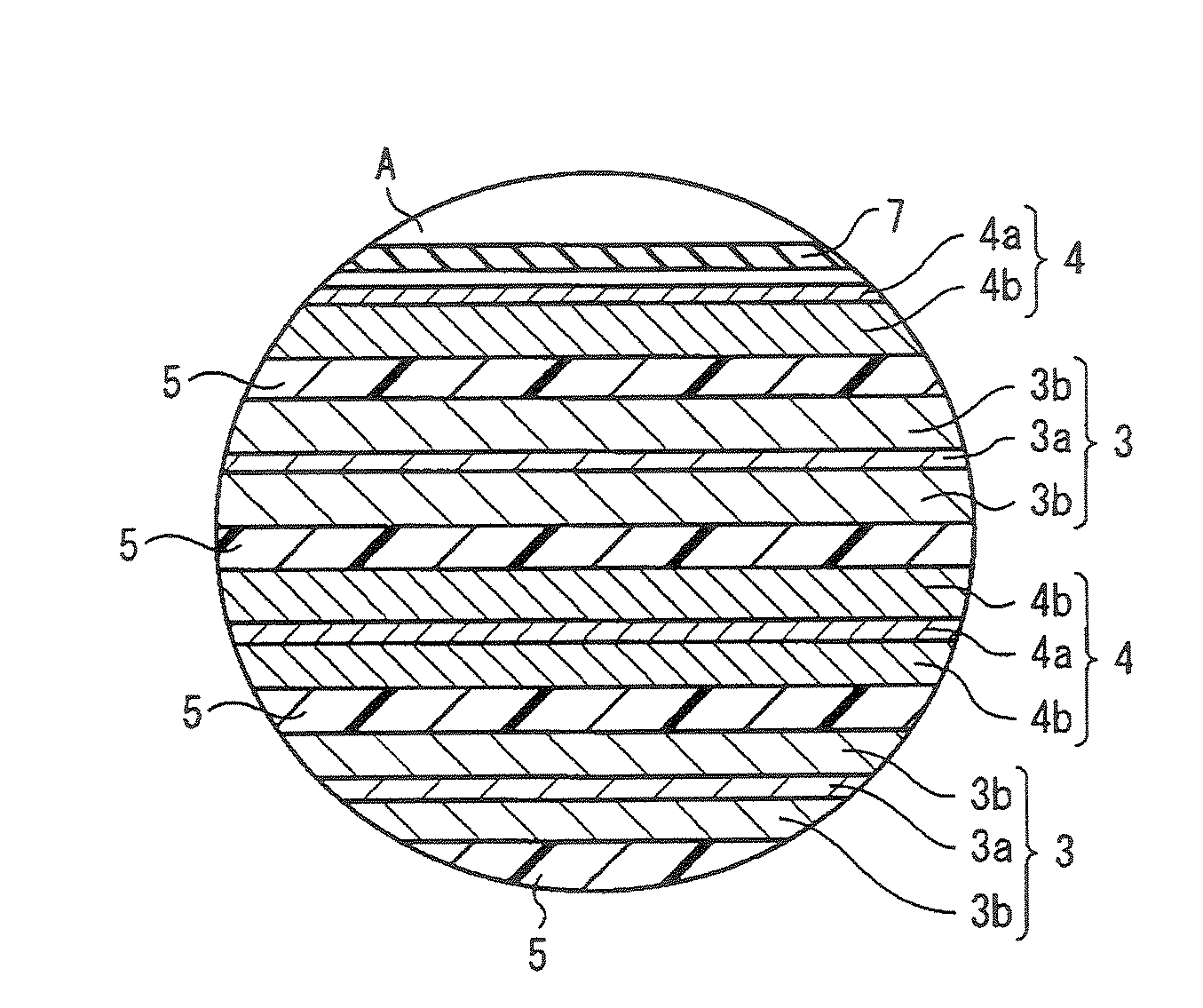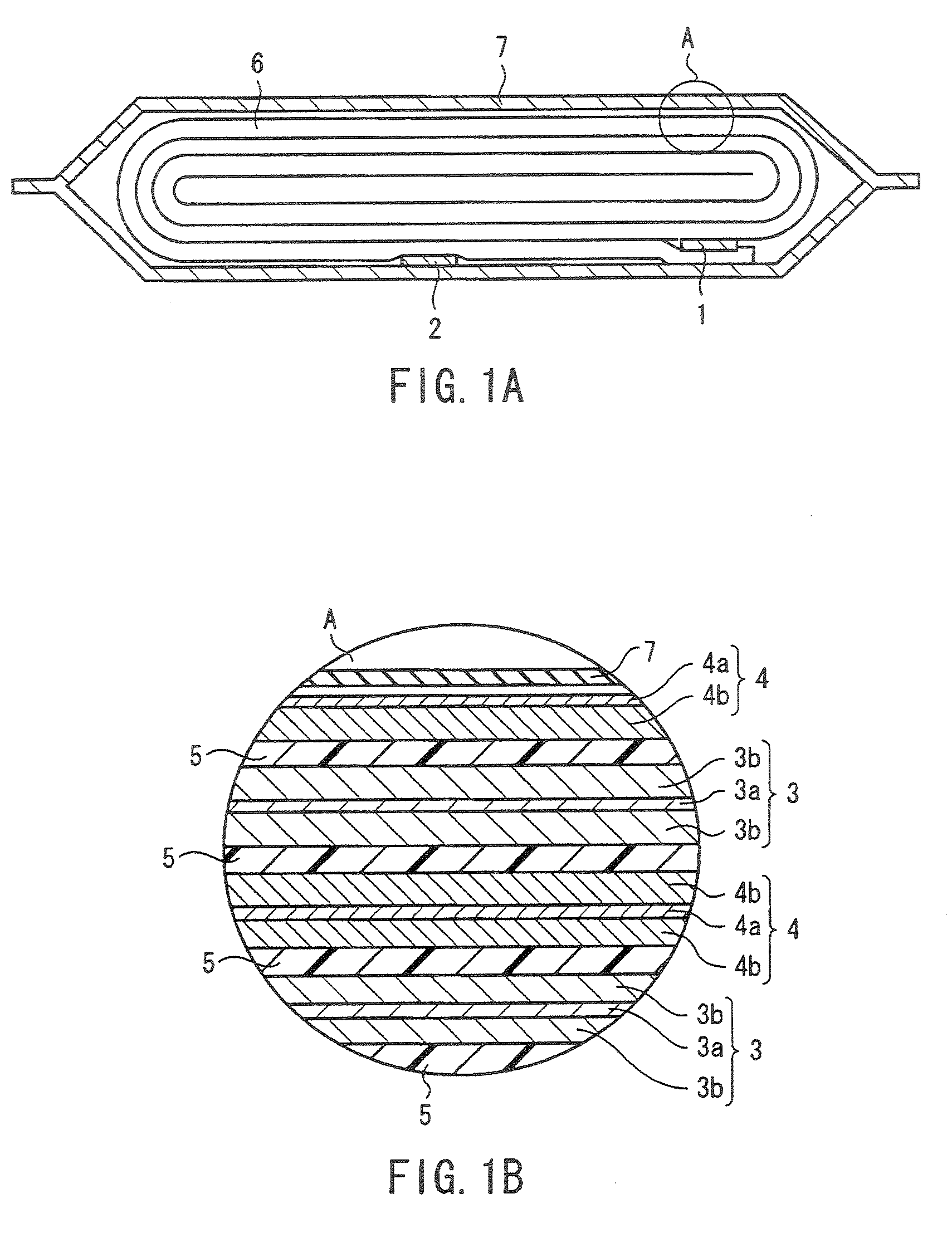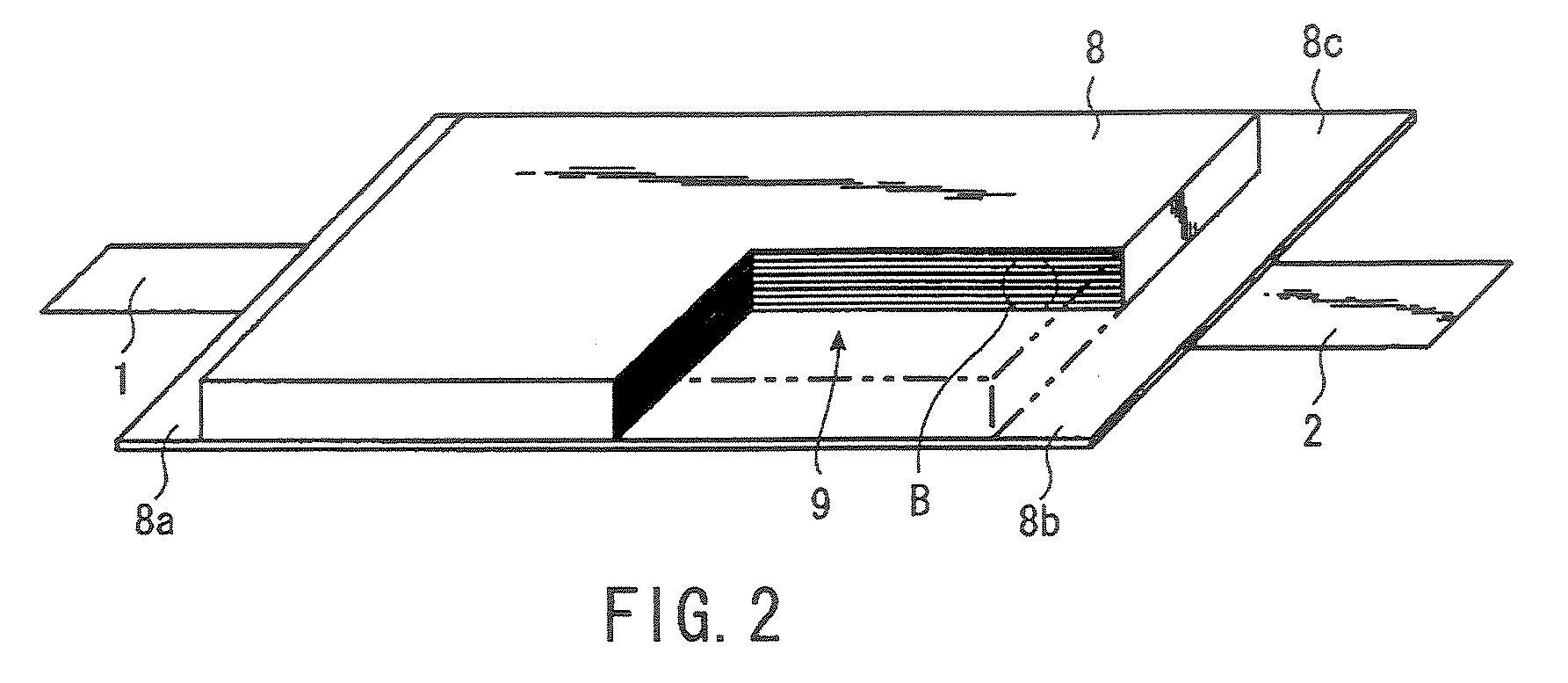Nonaqueous electrolyte battery, battery pack and vehicle
a technology of nonaqueous electrolyte and battery pack, which is applied in the direction of cell components, sustainable manufacturing/processing, and final product manufacturing, etc., can solve problems such as capacity deterioration
- Summary
- Abstract
- Description
- Claims
- Application Information
AI Technical Summary
Benefits of technology
Problems solved by technology
Method used
Image
Examples
first embodiment
[0068]The construction as an example of a nonaqueous electrolyte battery according to a first embodiment will now be described with reference to FIGS. 1A and 1B. Specifically, FIG. 1A is a cross-sectional view schematically showing the construction of a flattened nonaqueous electrolyte battery, and FIG. 1B is cross-sectional view showing in a magnified fashion the construction of a circular region A shown in FIG. 1A.
[0069]A positive electrode terminal 1 is electrically connected to a positive electrode 3, and a negative electrode terminal 2 is electrically connected to a negative electrode 4. The positive electrode 3, the negative electrode 4 and a separator 5 interposed between the positive electrode 3 and the negative electrode 4 collectively form a flattened wound electrode 6. Since the separator 5 is interposed between the positive electrode 3 and the negative electrode 4, the negative electrode 4 and the positive electrode 3 are positioned spatially apart from each other. The w...
second embodiment
[0154]The battery pack according to a second embodiment comprises a plurality of nonaqueous electrolyte batteries according to the first embodiment as unit cells. These plural unit cells are electrically connected to each other in series or in parallel to form a battery module.
[0155]It is desirable for the unit cell to have a rated capacity not smaller than 2 Ah and not larger than 100 Ah. It is more desirable for the rated capacity of the unit cell to be not smaller than 3 Ah and not larger than 40 Ah. Further, it is desirable for the unit cell mounted to a hybrid electric vehicle to have a rated capacity not smaller than 3 Ah and not larger than 15 Ah and for the unit cell for an electric vehicle and an uninterruptible power supply device (UPS) to have a rated capacity not smaller than 15 Ah and not larger than 40 Ah. Incidentally, the term “rated capacity” denotes the capacity under the condition that the unit cell is discharged under a current of 0.2 C.
[0156]It suffices to use a...
third embodiment
[0189]A third embodiment is directed to a vehicle equipped with the battery pack according to the second embodiment. The vehicle noted above includes, for example, a hybrid electric vehicle having 2 to 4 wheels, an electric vehicle having 2 to 4 wheels, and an assist bicycle.
[0190]FIGS. 9 to 11 show various type of hybrid electric vehicles in which an internal combustion engine and a motor driven by a battery pack are used in combination as the power source for the driving. For driving the vehicle, required is the power source exhibiting a wide range of the rotation speed and the torque depending on the running conditions of the vehicle. Since the torque and the rotation speed exhibiting an ideal energy efficiency are limited in the internal combustion engine, the energy efficiency is lowered under the driving conditions other than the limited torque and the rotation speed. Since the hybrid electric vehicle includes the internal combustion engine and the electric motor, it is possib...
PUM
| Property | Measurement | Unit |
|---|---|---|
| particle diameter | aaaaa | aaaaa |
| average crystal grain diameter | aaaaa | aaaaa |
| thickness | aaaaa | aaaaa |
Abstract
Description
Claims
Application Information
 Login to View More
Login to View More - R&D
- Intellectual Property
- Life Sciences
- Materials
- Tech Scout
- Unparalleled Data Quality
- Higher Quality Content
- 60% Fewer Hallucinations
Browse by: Latest US Patents, China's latest patents, Technical Efficacy Thesaurus, Application Domain, Technology Topic, Popular Technical Reports.
© 2025 PatSnap. All rights reserved.Legal|Privacy policy|Modern Slavery Act Transparency Statement|Sitemap|About US| Contact US: help@patsnap.com



